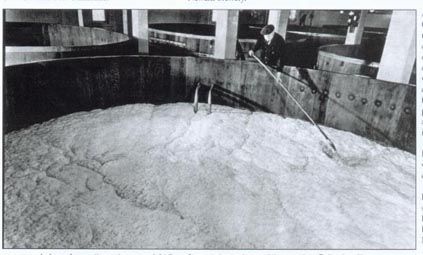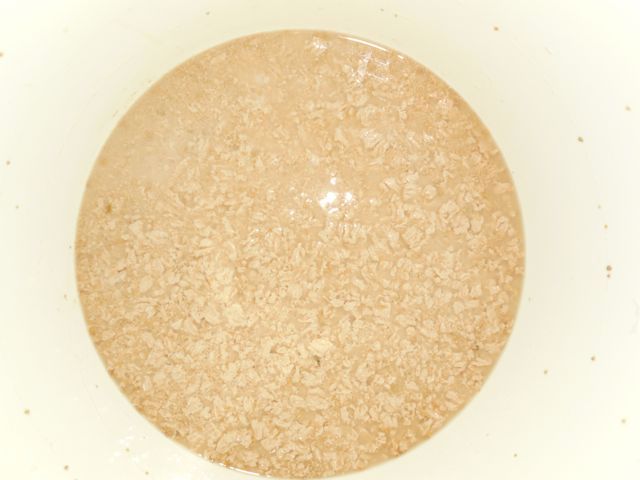How do you pimp yours? Just more of everything?
I have a fairly well tested APA to AIPA recipe now, with the differences being spread fairly equally over the grain and hop bill. Even my 4.7% APA still had a little sugar in it too, which I'd scaled down from the AIPA before it.
I'm looking around 1.075 for a (Mosaic) DIPA but I don't want a chewy, 1.020 finish. My usual 1.055 finishes around 1.011 and pretty dry, massively hop forward. So I could keep it the same percentage wise, but I wonder how you like to upscale the gravity and any other factors from AIPA to DIPA.
Pimping your AIPA recipe to DIPA
Pimping your AIPA recipe to DIPA
Busy in the Summer House Brewery
-
YeastWhisperer
Re: Pimping your AIPA recipe to DIPA
You should be able to get an all-malt, scaled percentage-wise 1.075 beer down to 1.015 without much problem. You just a have to repitch slurry from a highly attentuative strain. I recently attenutated a 1.070 Rye IPA down to 1.013 with repitched NCYC 1108.
By the way, while technically to style, most Americans consider a 1.075 beer to be a big IPA, not a DIPA. A beer normally has to break the 8% ABV threshold before being considered an Imperial IPA by most American brewers and beer drinkers, and that ABV level is difficult to obtain with a 1.075 beer unless one resorts to using sugar.
By the way, while technically to style, most Americans consider a 1.075 beer to be a big IPA, not a DIPA. A beer normally has to break the 8% ABV threshold before being considered an Imperial IPA by most American brewers and beer drinkers, and that ABV level is difficult to obtain with a 1.075 beer unless one resorts to using sugar.
Last edited by YeastWhisperer on Tue Apr 07, 2015 7:23 pm, edited 1 time in total.
Re: Pimping your AIPA recipe to DIPA
Thanks - I may well include some sugar and I take your point about OG/style. This will be WLP 001 in a starter by the way as I already have one in to use up. Perhaps there is a balance between low mash temp and amount of sugar; maybe the a different percentage of other grains...interested in views.
I didn't mean to limit my query just to attenuation and FG though: I'm interested in any other things folk prefer to find in a DIPA that they might not in a APA/AIPA and appropriate recipe tweaks. (I will assume higher IBUs too).
I didn't mean to limit my query just to attenuation and FG though: I'm interested in any other things folk prefer to find in a DIPA that they might not in a APA/AIPA and appropriate recipe tweaks. (I will assume higher IBUs too).
Busy in the Summer House Brewery
-
YeastWhisperer
Re: Pimping your AIPA recipe to DIPA
I am a BJCP judge, and to be honest, DIPA and AIPA usually get clustered with English IPA on a single flight. Generally, what distinguishes DIPA from AIPA is strength and hopping rate. With that said, what distinguishes AIPA and DIPA from English IPA is that the American variants have higher late hopping rates. They are not as bitter as they are hoppy (i.e., more late hops and less kettle hops). Winning English IPAs are usually seriously bitter beers in the 1.070 range. Winning American IPAs and DIPAs are usually sweeter with more hop flavor and aroma. I find many American IPAs and DIPAs to be overly sweet with a "perfumey" late hop profile that seems fake.
- Barley Water
- Under the Table
- Posts: 1429
- Joined: Tue May 22, 2007 8:35 pm
- Location: Dallas, Texas
Re: Pimping your AIPA recipe to DIPA
Just speaking personally, if you make a DIPA I would strongly advise adding some simple sugars to dry it out. Once beers get into the 1.080+ O.G. range it's pretty hard to keep them from tasting sweet without doing something to dry them out. An additional problem you can get into with contests is that a big DIPA which has not attenuated starts to taste much like an American Barley Wine. Interestingly Pliney the Elder is generally considered a good (and one of the original) example of the style. It's a beer with an O.G. of 1.070 (which as noted above is considered low now) and the clone recipie (which everyone has seen from Russian River so it's reliable) makes a nice beer. The grist for that beer includes a nice dose of corn sugar. I made an example for the Bluebonnet (very large contest here about 1,300 entries) and got into the second round but didn't win anything. The scoresheets indicated that the judges wanted a bigger beer so next time I try this I'll jack the O.G. up about 15 points and see what happens. I'll likely boost the malt a bit but I'll also boost the sugar.
Drinking:Saison (in bottles), Belgian Dubbel (in bottles), Oud Bruin (in bottles), Olde Ale (in bottles),
Abbey Triple (in bottles), Munich Helles, Best Bitter (TT Landlord clone), English IPA
Conditioning: Traditional bock bier, CAP
Fermenting: Munich Dunkel
Next up: Bitter (London Pride like), ESB
So many beers to make, so little time (and cold storage space)
Abbey Triple (in bottles), Munich Helles, Best Bitter (TT Landlord clone), English IPA
Conditioning: Traditional bock bier, CAP
Fermenting: Munich Dunkel
Next up: Bitter (London Pride like), ESB
So many beers to make, so little time (and cold storage space)
Re: Pimping your AIPA recipe to DIPA
Thanks both. I'm no stranger to big beers or sugar additions, but this will be the first one I've done that isn't 'Belgian'! It will certainly be the biggest IBU number so far.
I'm thinking something like this then, though I have to admit I've made some arbitrary decisions on sugar vs mash temp, for example. The Caravienna is only there out of continuity. Balance Value around 2. Comments gratefully received. First time with WLP001 for me.
Mosaic DIPA
Imperial IPA
Recipe Specs
----------------
Batch Size (L): 21.0
Total Grain (kg): 7.145
Total Hops (g): 149.57
Original Gravity (OG): 1.080 (°P): 19.3
Final Gravity (FG): 1.015 (°P): 3.8
Alcohol by Volume (ABV): 8.55 %
Colour (SRM): 9.5 (EBC): 18.7
Bitterness (IBU): 70.4 (Average)
Brewhouse Efficiency (%): 74
Boil Time (Minutes): 90
Grain Bill
----------------
5.430 kg Maris Otter Malt (76.01%)
0.572 kg Caravienna (8%)
0.572 kg Munich I (8%)
0.357 kg Cane Sugar (5%)
0.214 kg Wheat Malt (2.99%)
Hop Bill
----------------
40.0 g Mosaic Leaf (13.7% Alpha) @ 45 Minutes (Boil) (1.9 g/L)
13.7 g Mosaic Leaf (13.7% Alpha) @ 20 Minutes (Boil) (0.7 g/L)
20.1 g Mosaic Leaf (13.7% Alpha) @ 15 Minutes (Boil) (1 g/L)
16.4 g Mosaic Leaf (13.7% Alpha) @ 5 Minutes (Boil) (0.8 g/L)
13.7 g Mosaic Leaf (13.7% Alpha) @ 0 Minutes (Aroma) (0.7 g/L)
45.7 g Mosaic Pellet (13.7% Alpha) @ 0 Days (Dry Hop) (2.2 g/L)
Misc Bill
----------------
Single step Infusion at 66°C for 90 Minutes.
Fermented at 20°C with WLP001 - California Ale
Recipe Generated with BrewMate
I'm thinking something like this then, though I have to admit I've made some arbitrary decisions on sugar vs mash temp, for example. The Caravienna is only there out of continuity. Balance Value around 2. Comments gratefully received. First time with WLP001 for me.
Mosaic DIPA
Imperial IPA
Recipe Specs
----------------
Batch Size (L): 21.0
Total Grain (kg): 7.145
Total Hops (g): 149.57
Original Gravity (OG): 1.080 (°P): 19.3
Final Gravity (FG): 1.015 (°P): 3.8
Alcohol by Volume (ABV): 8.55 %
Colour (SRM): 9.5 (EBC): 18.7
Bitterness (IBU): 70.4 (Average)
Brewhouse Efficiency (%): 74
Boil Time (Minutes): 90
Grain Bill
----------------
5.430 kg Maris Otter Malt (76.01%)
0.572 kg Caravienna (8%)
0.572 kg Munich I (8%)
0.357 kg Cane Sugar (5%)
0.214 kg Wheat Malt (2.99%)
Hop Bill
----------------
40.0 g Mosaic Leaf (13.7% Alpha) @ 45 Minutes (Boil) (1.9 g/L)
13.7 g Mosaic Leaf (13.7% Alpha) @ 20 Minutes (Boil) (0.7 g/L)
20.1 g Mosaic Leaf (13.7% Alpha) @ 15 Minutes (Boil) (1 g/L)
16.4 g Mosaic Leaf (13.7% Alpha) @ 5 Minutes (Boil) (0.8 g/L)
13.7 g Mosaic Leaf (13.7% Alpha) @ 0 Minutes (Aroma) (0.7 g/L)
45.7 g Mosaic Pellet (13.7% Alpha) @ 0 Days (Dry Hop) (2.2 g/L)
Misc Bill
----------------
Single step Infusion at 66°C for 90 Minutes.
Fermented at 20°C with WLP001 - California Ale
Recipe Generated with BrewMate
Busy in the Summer House Brewery
-
YeastWhisperer
Re: Pimping your AIPA recipe to DIPA
If you have used US-05, then you have used WLP001. It's the same yeast strain. Many people believe that the strain came from Sierra Nevada. However, it is actually one of two strains that were formerly used by America's largest ale brewer, Ballantine. The crazy thing is that the strain was not used as an ale strain until Sierra Nevada obtained it from Siebel as BRY 96. It was used to make lagers in Ballantine's smaller brewery on Freeman Street. The smaller brewery was formerly known as the Schalk Brothers Brewery. Ballantine's ale strain is Siebel BRY 97. I personally like BRY 97 a lot more than I like BRY 96; however, BRY 97 is nowhere near as attenuative as BRY 96, and it is slow to start when used in dry form.
Here is a key to the strains:
Siebel BRY 96 = Ballantine "Beer," "Chico," Wyeast 1056, White Labs WLP001, and Fermentis US-05
Siebel BRY 97 = Ballantine "Ale," Anchor Liberty Ale, Wyeast 1272, White Labs WLP051, and Lallemand BRY 97
These strains are also held in the United States Department of Agriculture (USDA) Agricultural Research Service (ARS) NRRL Collection.
Here is the cross reference:
Siebel BRY 96 = NRRL Y-7407
Siebel BRY 97 = NRRL Y-7408
NRRL Y-7407
Accession numbers in other collections: Lange 2
Isolated from (substrate): BR, Beer pitching yeast
Substrate location: Ballantine Brewery, New Jersey, USA
Comments: ID from 26S renal partial sequences.
NRRL Y-7408
Accession numbers in other collections: Lange 4
Isolated from (substrate): BR, Ale pitching yeast
Substrate location: Ballantine Brewery, New Jersey, USA
Comments: ID from 26S rDNA partial sequences
A little Ballantine History
http://en.wikipedia.org/wiki/Ballantine_Brewery
http://beersinthehenhouse.blogspot.com/ ... rican.html
Check out this spiffy looking guy skimming one of the old pitch-lined wood fermentation vessels at the Ballantine Ale Brewery on Front Street.

That yeast strain is definitely not BRY 96. BRY 96 is not that flocculant. It's definitely BRY 97. BRY 97 is that flocculant.
Here is a photo that I shot after racking a blonde ale that was fermented with BRY 97:

Look at the size of the flocs!
Here is a key to the strains:
Siebel BRY 96 = Ballantine "Beer," "Chico," Wyeast 1056, White Labs WLP001, and Fermentis US-05
Siebel BRY 97 = Ballantine "Ale," Anchor Liberty Ale, Wyeast 1272, White Labs WLP051, and Lallemand BRY 97
These strains are also held in the United States Department of Agriculture (USDA) Agricultural Research Service (ARS) NRRL Collection.
Here is the cross reference:
Siebel BRY 96 = NRRL Y-7407
Siebel BRY 97 = NRRL Y-7408
NRRL Y-7407
Accession numbers in other collections: Lange 2
Isolated from (substrate): BR, Beer pitching yeast
Substrate location: Ballantine Brewery, New Jersey, USA
Comments: ID from 26S renal partial sequences.
NRRL Y-7408
Accession numbers in other collections: Lange 4
Isolated from (substrate): BR, Ale pitching yeast
Substrate location: Ballantine Brewery, New Jersey, USA
Comments: ID from 26S rDNA partial sequences
A little Ballantine History
http://en.wikipedia.org/wiki/Ballantine_Brewery
http://beersinthehenhouse.blogspot.com/ ... rican.html
Check out this spiffy looking guy skimming one of the old pitch-lined wood fermentation vessels at the Ballantine Ale Brewery on Front Street.

That yeast strain is definitely not BRY 96. BRY 96 is not that flocculant. It's definitely BRY 97. BRY 97 is that flocculant.
Here is a photo that I shot after racking a blonde ale that was fermented with BRY 97:

Look at the size of the flocs!

